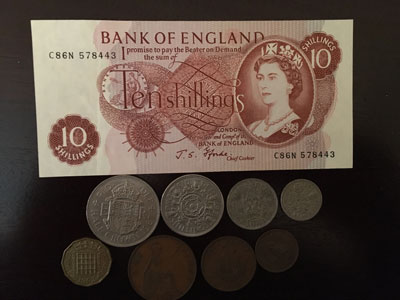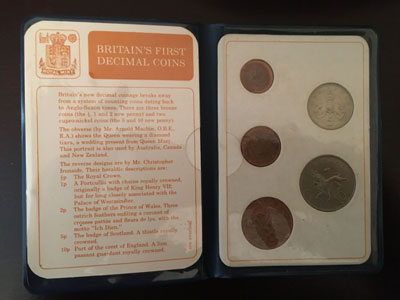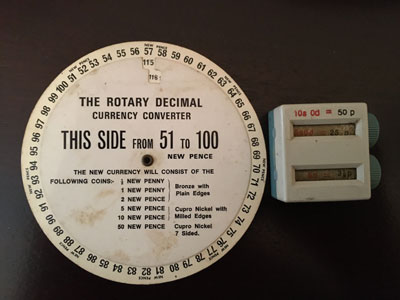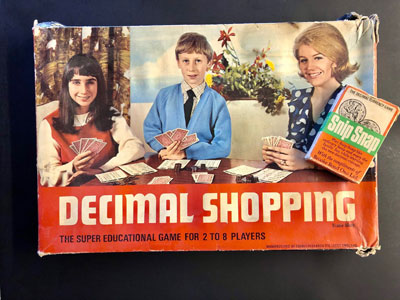Decimal Day – Monday 15 February 1971
Monday 15 February 2021 marks 50 years since so-called Decimal Day (or ‘D’ Day). This was the date when the old monetary system of pounds, shillings and pence was replaced with decimal coinage. Other countries such as Canada and the United States had long operated decimal currencies and by the beginning of the 1960s other Commonwealth countries such as Australia and New Zealand had plans to decimalise. In 1960 it was recommended that Great Britain do the same and the Decimal Currency Act was passed in May 1969. February was chosen as the month to introduce the new coins as it was the quietest time for banks, shops and transport companies.
The pound was to be kept but divided into 100 ‘new pence’ rather than 240 ‘old pence’. New coinage was also to be issued alongside the old coins. The 5p and 10p coins were introduced in April 1968 and these were the same size and value as the shilling and florin. They ran alongside these existing coins as their ‘decimal twins’. In October 1969 the 50p piece was introduced. As D-Day approached the half penny, half-crowns (12½p), threepenny bits ((1½p) and 10 shilling (50p) notes were removed from circulation.

Pre-decimal currency. The ten-shilling (ten bob) note was worth 50p and replaced by a seven-sided coin. This was quite radical in 1969.
Top (from left) a half-crown (12.5p), an old two-shilling piece (10p), a shilling (5p) and a sixpence or tanner (2.5p).
Bottom: a 12-sided threepenny bit, a penny and a halfpenny. Extreme right is a farthing (a quarter of a penny).

A pack of Britain’s first decimal coins although no 50p has been included
A publicity campaign ran in the weeks before the big day. The BBC showed a series of five minute programmes called ‘Decimal Five’ and a number of records were produced such as ‘Decimalisation’ by Max Bygraves.
Nearly 3 and a half million coins were minted for the changeover and 340,000 cash registers were converted to make purchases in ‘new money’.
A lot of preparation was happening behind the scenes especially in banks. In order for them to change their systems they closed on Wednesday 10th February 1971 and did not reopen until 10am on Monday 15th February 1971. The preparations were made so well that Lord Fiske Chairman of the Decimal Currency Board predicted that D-Day would be “the non-event of 1971”. He was right and the whole process ran very smoothly.

Examples of decimal converters that were available from the late 1960s

Examples of decimalisation games in Tameside Museums’ collections
With thanks to Mike Pavasovic for assistance with this article.

